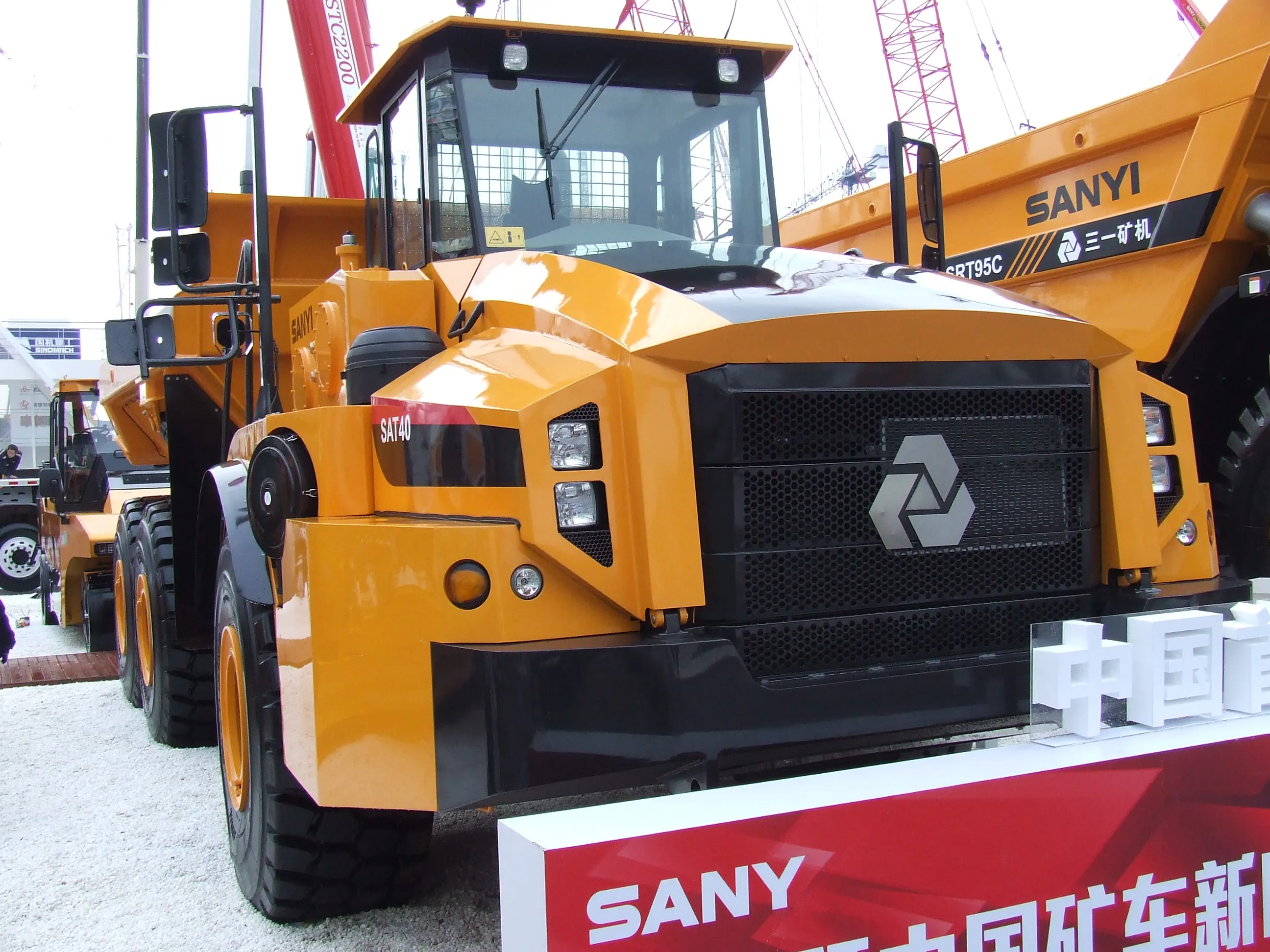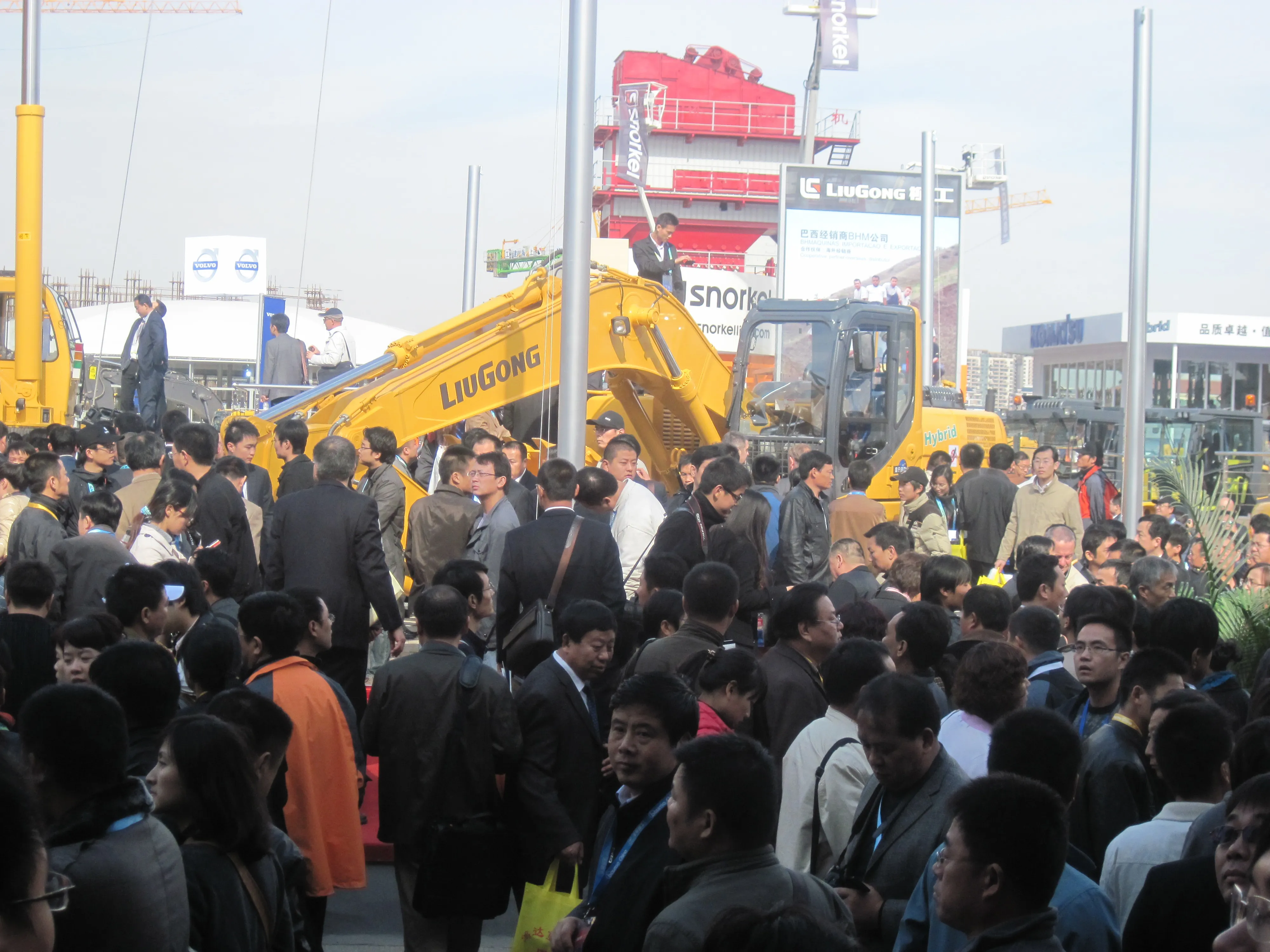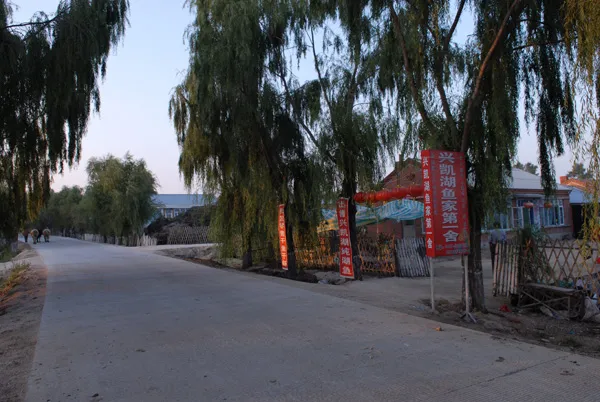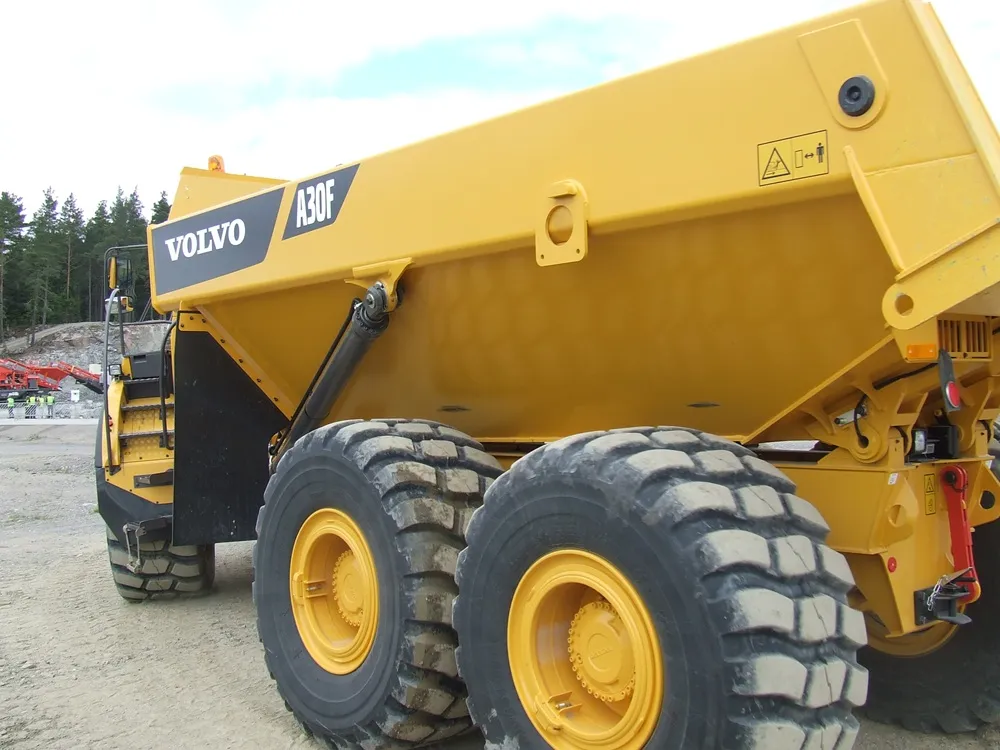
Chinese construction equipment firms have been building their operations in local markets – but are now looking to develop globally - Mike Woof writes
In recent years Chinese construction equipment manufacturers have been able to capitalise on local demand in the home market. The rapid rate of expansion of transport infrastructure, fuelled by government spending, led to a massive need for construction machines. The country’s manufacturers have grown rapidly in size, investing enormously in factory capacity while also expanding model ranges to meet a broader array of machine requirements.
In a comparatively short space of time, several Chinese construction equipment manufacturers have grown in size to rank in the top 10 largest equipment builders worldwide.
But with Chinese demand for equipment having peaked, the country’s manufacturers are now under great pressure to increase exports of machines. For some of the smaller and weaker Chinese manufacturers, the pressures are likely to become too great. There have already been casualties too, with excavator firm Chery Heavy Industries hitting major financial problems and being bought up by Changsha-based Zoomlion.
The quality of Chinese made construction equipment has increased significantly. However the companies still have work to do in developing their credibility with customers in international markets. Crucial to this, is the need to develop dealer support and parts back-up. Another important factor is improving resale value, which is based heavily on the perception of quality of a product. High end machines from long established European, Japanese or US producers often have good resale values. But Chinese equipment still needs to develop the perception of quality in the view of purchasers to establish good resale values, even for those premium Chinese firms where actual product quality is indeed high.
For some product segments, and most notably cranes and concrete pumps, Chinese companies are now acknowledged as amongst the world leaders. In various sectors of the crane market, Chinese manufacturers have built the largest and most powerful machines anywhere in the world. Meanwhile in concrete pumping, a series of key acquisitions of western manufacturers have seen three Chinese firms, SANY, XCMG and Zoomlion, become the global world market leaders.
In the earthmoving equipment sector, Chinese companies face more competition.
Using the Polish plant, LiuGong is now gearing up production of European-built excavators for the global market. At the same time, the firm has also invested heavily in a major research and development operation in China, where it intends to work on new construction machine projects in coming years. This facility has been spearheaded by Dave Beatenbough, vice president at LiuGong and with many years-experience in the construction equipment sector at major US manufacturers.
In excess of US$64 million (400 million RMB) has been invested by LiuGong into research and development in recent years and the company will continue this trend with the completion of its new facility in China. This project will employ large numbers of engineers when it is fully commissioned and Beatenbough said, “We started as early as three years ago to hire people to work in the R&D labs.”
The research and development facility is central to LiuGong’s future plans with regard to its global operations. Through this facility the firm intends to boost both the quality of the products and the perception of quality in the view of customers. These issues work together and are crucial to developing positive factors such as strong product resale value. Beatenbough said, “Anybody can bolt parts together and make an excavator. For better fuel economy you have to integrate the engine and the hydraulics.” And he added that the sophisticated electronics and software that will facilitate this machine integration will be developed by LiuGong itself.
Meanwhile Shanghai-based Lonking is another of China’s leading producers of wheeled loaders and has developed a healthy share of this market segment. Wheeled loaders have traditionally accounted for a major portion of construction equipment sales in China, but this is now changing with demand for excavators now growing.
The company has followed a path of diversification in recent years and Lonking is gearing up its excavator production. Chen Chao, executive director and vice president of Lonking said, “The excavator is a new area for us. We were not very active in this market before.”
The company already sells its machines outside of China through a network of distributors. The company has developed strong sales into Latin America, Russia, Mid-east, Africa and parts of Asia. Brazil has been a key market in the past and the company is looking to set up new parts and distribution operations there in a bid to boost customer support. Meanwhile Chile and Colombia are also seen by Lonking as having major growth potential for sales. Elsewhere the firm is also developing sales in Indonesia and Nigeria. “We are confident because we have a big potential,” he said.
One strategy by Lonking in boosting its presence outside of China is to match or even beat the performance of western made wheel loaders. The company is in the process of developing a new wheeled loader generation that will feature external styling on a par with those from major western firms. Perhaps more importantly, these sophisticated machines will also feature highly advanced hydraulics under the covers.
Unlike some of the other Chinese manufacturers, Lonking makes a high percentage of the parts it uses in its own machines. In its wheeled loaders for example, Lonking makes around 69% of the components, including major parts such as axles, transmissions and hydraulic rams. This strategy is to ensure that all components Lonking uses meet its high quality standards, while the approach also ensures that the firm has regular supplies of the parts it needs for the production when required. The tyres and engines are now amongst the few major items Lonking has to buy-in from external companies.
Lonking has taken this process of self-reliance further in recent times too, by investing in the manufacture of components.
Perhaps unusually, Lonking now even supplies parts to other manufacturers of construction machines. The parts being sold to OEMs include hydraulic cylinders, radiators and hydraulic parts.
The new hydraulics component operation is a particularly important stretgic move for Lonking. This project was initiated when Japanese hydraulic component suppliers proved unable to cope with the high levels of demand from Chinese manufacturers. As supplies of imported hydraulics components insufficient were insufficient to satisfy production, Lonking spotted an opportunity to redress the balance. Chao said, “We have invested a lot in hydraulic parts.”Constructed alongside Lonking’s wheeled loader and excavator production facilities in Shanghai, the new hydraulic components operation represents a substantial investment for the firm. The brand new facility now produces a wide range of parts such as track motors, valve blocks, pumps, joysticks and all the necessary internal components.
The efficiency of Lonking’s components manufacturing operation is of note, with the operations delivering a strong focus on quality and the close machining tolerances are being carried out to extremely high standards. These high precision products are made under strict controls, with critical parts made in clean room conditions. As a result, Lonking claims its product quality matches the well-established Japanese competition. Quality testing of the hydraulics components has in itself been a major investment, with the firm spending some US$7.8 million (48 million RMB) on this alone. Chao said that all the parts are tested before assembly, with items such as pumps then being bench tested.
With this investment now underway, Lonking is becoming a major supplier to other Chinese OEMs. Around 60% of the output is now being used for its own machines and 40% being sold to other manufacturers. Understandably, the company’s hydraulics components business looks set to account for a substantial portion of Lonking’s turnover over time.
SANY is another of China’s major manufacturers and the firm also has a high profile in export markets. A major manufacturer of concrete pumps in its own right, the company raised its profile further when it purchased the German Putzmeister brand some years ago.
Owning a premium German brand like Putzmeister has given SANY a tremendous advantage. SANY has been able to capitalise on the strength of the Putzmeister name, as well as on its equally strong record in product development.
Similarly, the knowledge gained from the way Putzmeister’s operations are run is helping SANY in developing dealer and parts support for the company’s other machine ranges.This is forming a key component in SANY’s drive to reinforce its position as a quality brand from China. Wenbo Xiang is president of SANY and said, “Low price companies can have large sales but they earn little, and that’s a dangerous position to be in.” He added, “You need to balance profits and if you focus too much on technology, you will not survive.”
Last year, SANY exported around 20% of its production, with the firm is looking to increase this figure. Xiang said, “I think 20% is not good enough.
Yes, we need to get into the international market and it’s quite different from China. Customer demand is different and the machines might look the same but are quite different.”
SANY has a strong position in the Chinese market and while its products are cheaper than those from Japanese, European and US manufacturers, they are more costly than those from South Korean companies. In terms of value for money, he said that SANY machines also offer a good option, “The price is cheaper but the quality is better than from our local competitors.”
South America, South East Asia and Africa are all strong potential markets and Xiang said that for South East Asia and Africa in particular, these territories do not have local equipment suppliers. SANY recognises however that business operations vary around the world, depending on the territory and Xiang said, “The relationship with the customer is also different in the international market compared with China.” The engine emissions standards vary also by territory and he said, “It’s really different so we need to learn more and accumulate knowledge step by step.”
SANY has several divisions and is also looking to develop sales for its earthmoving equipment and road machinery outside of China. The earthmoving machines have been available in a range of emergent and developed markets for some time, with the company also now looking to develop export sales of the road machines. Excavators have also seen a particularly rapid growth in importance for SANY and Xiang said, “We achieved good sales in excavators and they’re more popular in the Chinese market than before.”
With its worldwide operation, SANY recognises the need for different products to suit local demands and the firm is adapting its products to meet the requirements of the international market. Xiang said, “I visited India and I think we need to develop a different type of excavator for that market.”
Xiang continued, “We may produce three different excavators for high, medium and low technology needs.” And he explained that the company is considering producing excavators in North and South America for those markets, while there is a possibility of a plant being established in Turkey to supply Europe, with another in India for that territory. Specific changes to machines are likely due to the local market, with excavators in South America often being used in the mining industry for example, meaning that they work in a tougher environment and work longer hours so they require to be more rugged and durable.
Xiang still sees strong potential for conventional distributor and dealer networks and online sales are not a major business segment for SANY, although the company is looking to the future. He said that this suits the trade in secondhand machines and added, “We do some small efforts online. We know a lot about e-commerce. It is quite different from traditional sales.”
XCMG is another Chinese firm with a strong foothold in the crane and concrete pump markets. A key move made in 2012 was XCMG’s acquisition of 60% of the Schwing concrete pump business, crucial to the company’s plans to become a major force worldwide. Following this deal, XCMG and Schwing established a joint-venture in 2013 for the Chinese market, while the Schwing brand remains the focus for sales into developed markets. Exports are increasingly important for XCMG, with strong sales into Latin America, Africa, the Middle East and other parts of Asia. And in the emerging markets XCMG is seen as a first choice for many customers, according to the firm. Zhang Yanmei is vice president and said, “We offer complete construction solutions in the emerging markets.” He added, “For the moment Latin America, Africa and the Middle East are XCMG’s main export markets.”
Although headquartered in Xuzhou where its manufacturing output is also concentrated, XCMG also has a number of production facilities in other major Chinese cities. Outside of China, XCMG also has manufacturing operations in Brazil, Poland, Malaysia, Iran, Argentina and Uzbekistan.
International coverage is strong and XCMG has a major presence in over 40 countries, while the company has also ensured it gives good support with 30 components centres, 10 training facilities and eight call centres located around the world. In all XCMG has seen exports to 169 countries around the world, including the US and a number of countries in Europe.
Looking ahead, XCMG will increase its presence both in North America and Europe, with a long term plan to boost its operations in developed markets. In the US, XCMG already has a substantial presence in Minneapolis, as well as service centres in New York and Orlando. In addition, the company is establishing a service centre in Houston, while XCMG set up a European research and development centre in 2013 and as it already has a substantial presence in Minneapolis, its US research and development facility will be situated close at hand.
The US and European research and development facilities work closely with the company’s Chinese headquarters as XCMG is keen to continue developing its technology so that its products will meet the demands of customers in North America and Europe. The company has also managed to integrate operations between the research institute it has at its headquarters in China and the Brazilian and US technical centres, as well as its European research and development facility. For North America XCMG is working hard to raise the profile of its products and also prove to customers that the machines offer high performance and reliability. In addition, the company is considering whether to start manufacturing in the US at some point in the future, most likely in Minneapolis. XCMG has already committed to entering the North American market, showing cranes as well as soil compactor models and excavators that meet US requirements at Conexpo in Las Vegas early in 2014.
The company recently held a worldwide dealer meeting in China with a view to developing its support strategy on a global basis. Crucially, the company's internationalisation strategy includes developing service and spare parts support and a credit insurance policy and overseas e-commerce platform, which was explained to the dealers at the meeting.
In recent years, XCMG says it has been adjusting its operations to meet the needs of overseas markets, paying more attention to the quality of its operations and internal management efficiency. This process has seen the firm develop the network of its overseas offices, as well as the service and spare parts centres, providing stronger support to dealers in technical back-up, maintenance and credit financing.
XCMG has now set up an overseas e-commerce operation by joining with Chinese e-commerce enterprise Alibaba to build the XCMG Alibaba cross-border platform. This sells XCMG's machinery and spare parts to over 190 countries. The platform's construction is said to be a breakthrough in cross-border e-commerce. Using the platform, XCMG can present products comprehensively and in detail, communicate with overseas customers rapidly and effectively.
The third Chinese manufacturer with a leading position in cranes and concrete pumping is Changsha-based Zoomlion. The firm makes some of the largest cranes anywhere in the world, with crawler crane, truck crane and tower crane models that have all broken an array of capacity records. The company’s presence in the tower crane segment was further strengthened when it bought the rights to the Jost flat top crane designs. Following this acquisition, the firm switched to making the more modern flat top tower cranes, replacing its earlier designs.
The flat top crane technology has had a significant benefit to the company, which says that since this was introduced to the range, the tower crane business has seen revenue increase by 45%. Sales are widespread too with a customer base in the Middle East, Russia, Hong Kong and Singapore, as well as the US and Germany. In mobile cranes Zoomlion has yet to develop the same sales strength as for its tower cranes where it holds a major share of the global market, but the company believes its new lifting division is a step in the right direction. Rough terrain cranes are machines the firm sees particular potential for worldwide, including the US.
Geoffrey Tao is vice general manager of Zoomlion Overseas Branch Company and he explained, “We have a long history of making tower cranes. It makes us stronger if we combine the tower crane, mobile crane and crawler crane business in one division. We’ve decided to share research and development and manufacturing and we think it will make the business more efficient.”
The concrete division however remains Zoomlion’s largest operation. And Zoomlion’s acquisition of the Italian CIFA concrete pump business was a key stage in the firm’s growth, bringing with it a wealth of western technology as well as expertise in international distribution. From Cifa’s perspective too, the move was entirely positive, freeing up massive resources for further research and development. A key development from this has been the launch of highly advanced concrete pumps that use lightweight carbon fibre boom sections. These offer significant performance benefits as the lightweight carbon fibre permits the use of shorter truck chassis than would normally be required. Meanwhile the recent acquisition of the German M-TEC dry-mix mortar range has further boosted Zoomlion’s presence in the concrete equipment sector. International manufacturing operations for Zoomlion took a further step when the group has opened a production site at Indaiatuba in Brazil. This site is used to make concrete equipment and the products will include truck mixers, batching plants and concrete pumps. Zoomlion is still undecided as to when it will re-enter the North American market with its concrete pumps, but given the sophisticated Cifa technology and the growing awareness of the brand’s quality cranes, this offers a strong potential for the future.
Zoomlion has also now fully integrated the Chery excavator models it acquired recently into its product range. Currently, Zoomlion has our sales networks in 80 countries and regions in the world, with production in India, Brazil and Europe as well as arrangements with major financial leasing companies in the world. It is of note too that re-manufacturing is an increasing focus for the firm. This helps extend product life and improves the cost performance for clients.
However, it is worth noting that Chinese manufacturers are also facing strong competition in their home market from western manufacturers. In the road machinery segment companies such as Atlas Copco Dynapac, the Fayat Group and the Wirtgen Group all have increased manufacturing capacity in their Chinese plants in recent times. These companies have managed to take advantage of lower cost production in China, while selling high quality machines for the Chinese and other emergent markets.
Similarly in earthmoving, firms such as Caterpillar, Hyundai, Komatsu and Volvo CE (through its ownership of SDLG) also have a major manufacturing presence in China, particularly in the earthmoving equipment segment.
Looking ahead, it is clear that several of the key Chinese companies will grow their operations globally.









